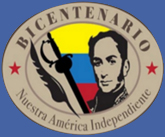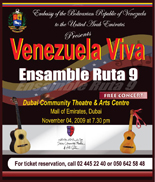Carnival
Probably the most celebrated event of them all, Carnival takes place during the month of February, forty days before Good Friday,but has no fixed date because Easter is a floating holiday. Carnival has existed in Venezuela since the colonial period, and was much celebrated in Caracas. Today, however, Carnival has lost its importance in the major cities, and is taken more seriously in the coastal towns, and other provinces, especially in El Callao.
El Callao was founded in 1853 with the name of Caratal. It is a town of multicultural history, where many Europeans would try their luck in their search of gold and other vast riches this area offered. It was the mixture of Englishmen, Americans and Frenchmen, and their cultures, that brought as a consequence the version of Carnival that is celebrated in this town. Carnival became a moment in which people could forget their racial, social and herichal differences. The blacks that were brought to the country as slaves have contributed enormously to this festival, since this was also an opportunity for them not to be belittled, and and they could behave any way they wished, and pray any way they wanted.
By 1925 the people of El Callao treated this festivity as an important event in their yearly calendar, and preparations began early. Costumes were ordered from an English shop called Weldon's which arrived in great bulks through the postal system of Ciudad Bolívar. Funnily enough, it was the blacks of El Callao that would order these costumes, as they liked to dress up as queens, ladies of honour, court jesters and the like. Embroidered fabrics, lavish silks and other decorations were also ordered for this event. Because of the proximity of the Caribbean islands, traditions such as the calypso from Trinidad and the laborious dresses of the women of Guadalupe and Martinique became part of the show as well.
It is important to note that Carnival as a celebration is known for its devils and not its other components, which characterize the region it is celebrated in. The masks that the devils wear and their impulsive personality are the trade marks of these festivities.
Carnival in El Callao begins forty days before Good Friday.
Los Tambores de Barlovento
The Drums of Barlovento are celebrated at the beginning of the rain season in March, near Corpus Christi, in Barlovento, Miranda state. This area comprises the towns Curiepe, Higuerote, Caucagua, Tacarigua and others where there is a large black population due to the coffee and banana plantations that existed there in the colonial period. Thus, this is an Afro-Caribbean tradition in which the drums are the main theme complemented by various other wooden instruments, mostly of African origin.
La Paradura del Niño
In the Andean region of Táchira, Mérida and Trujillo, this is a celebration around the 6th of January, focussing on Jesus as a child. It is a procession in which the Baby in its manger is placed on a large handkerchief and every corner is held by a person who has a candle in his hands. He is paraded around the town from house to house and a drink is offered to the people who carry him. The people in the niño's procession pray for him, and themselves.
Los Diablos de Yare
Los Diablos de Yare is celebrated in the main cities of the Federal District, Aragua state, Miranda state, and Cojedes state. This is a carnivalesque celebration, in which devils with many horns and different human or animal faces parade around the town, to arrive at the main church. These devils are paying penance, and the amount of horns show the many sins they are paying for. Just in the same way as this celebration took place in 16th Century Spain, so it was taken to its colonies, such as Venezuela. The people follow them to their destination, and a great party begins. This celebration occurs during Corpus Christi.
La Cruz de Mayo
This religious act is in the name of the Holy Cross. Every cross found in public places in the smaller towns and provinces is decorated with flowers on the third of May. The people of these towns light candles and take them to the cross with offerings and a wish. The celebration that follows varies according to the town's traditions.
Semana Santa / Easter
Easter is a Catholic festival, but it has become a holiday around most of the world. It begins forty days after Carnival, so its date oscilates between March and April, and would officially begin on Good Friday. On Palm Sunday people visit the church nearest to them to pick up a piece of holy palm. This is probably the only catholic ceremony that has not been altered in Venezuela, and would therefore need no explanation. In just the same way as catholics in the US fast on certain days, and pray on others, Venezuelans would also be doing the same things. The official religion of the country is, after all, Catholisism, even though people do not attend church on Sundays as often as in Spain










